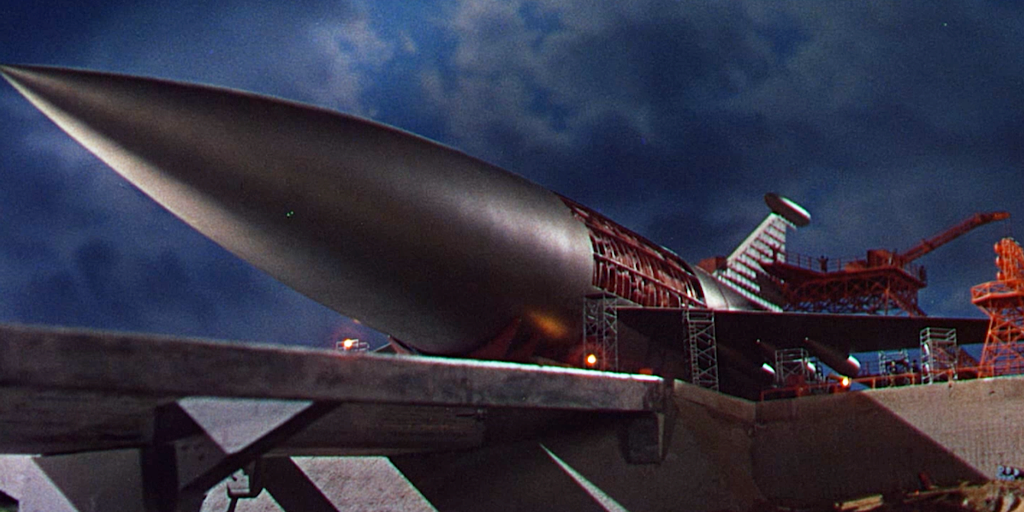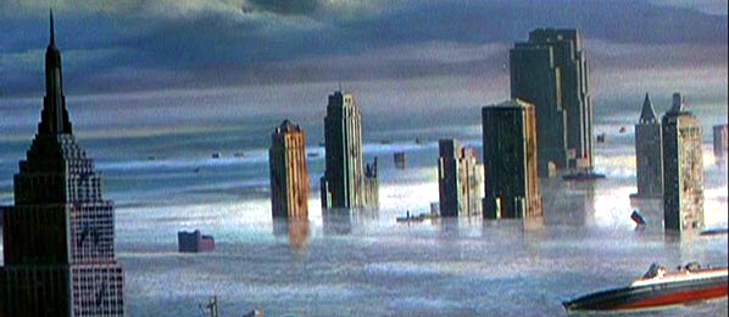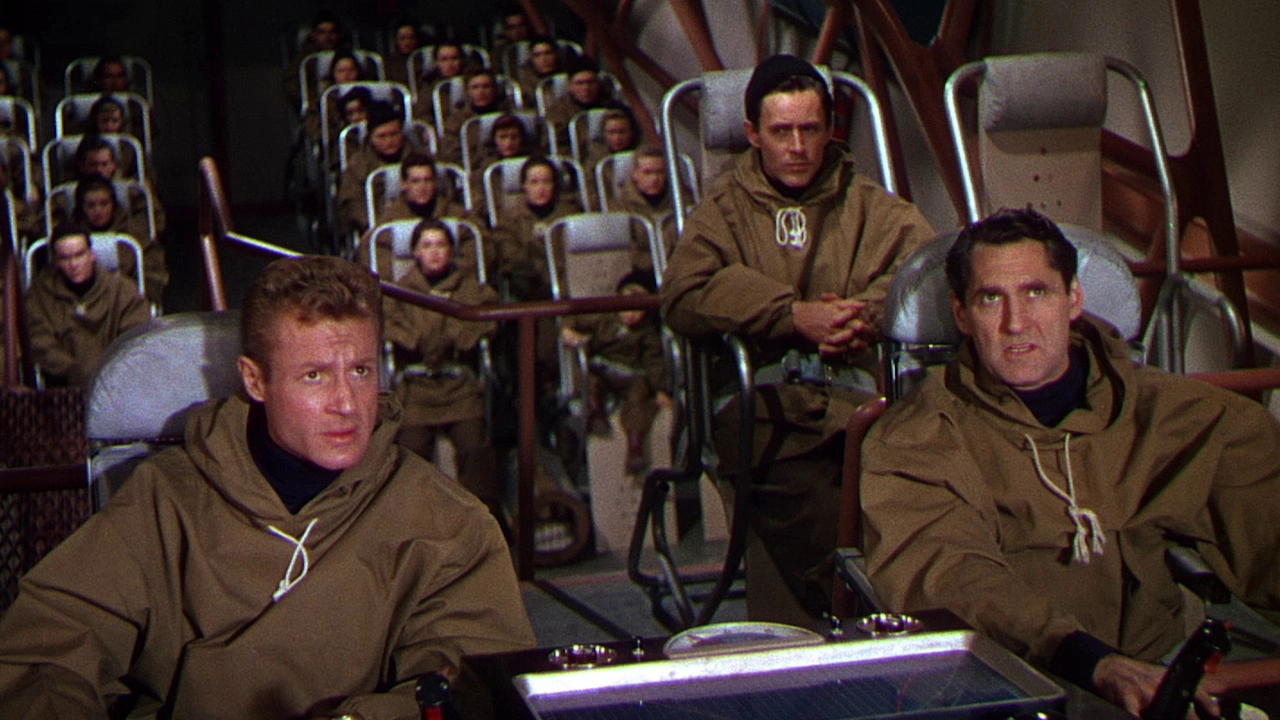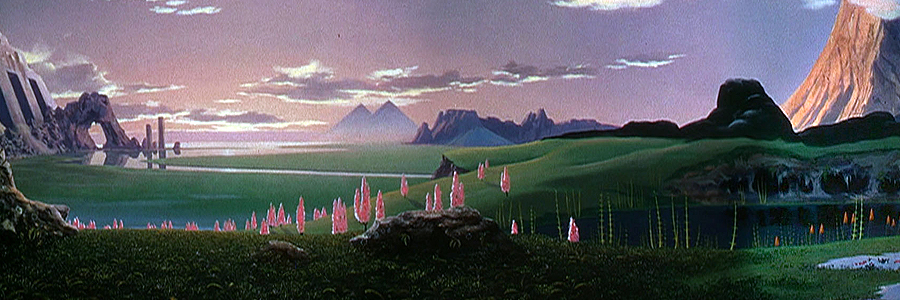The disaster movie has been a staple of cinema for quite some time, with RKO’s 1933 disaster epic Deluge being one of the earliest examples of a genre that is still going on strong today, but in 1951 legendary movie producer George Pal put his stamp on the genre with his film When Worlds Collide, a film that established many of the characters and tropes that would become hallmarks of the disaster movie, a film we hope will not be as prophetic as his science fiction classic Destination Moon.
Based on the 1933 science fiction novel of the same name, co-written by Edwin Balmer and Philip Wylie, this George Pal science fiction classic tells the tale of the coming destruction of the Earth by way of a rogue star and its orbiting planet, a story that can best be described as Space Noah’s Ark. The plot kicks off when astronomer Dr. Emery Bronson (Hayden Rorke) discovers that a rogue star named Bellus, accompanied by an Earth-sized planet named Zyra, is on a collision course with Earth. Pilot David Randall (Richard Derr) is tasked with couriering top-secret photographs of the celestial threat to Dr. Cole Hendron (Larry Keating) to have these findings verified, and when this is done the news is bad, turns out that the end of the world is about eight months away. Unfortunately, The United Nations and other scientists scoff at these claims and laugh at his proposal to build rockets to transport a lucky few to the hopefully habitable Zyra. With the world doomed a couple of wealthy humanitarians step in to aid Hendron’s “folly” and soon a rocketship is under construction.
Note: We are told that the spaceship must be completed in eight months but this film takes place when space travel was still all theoretical, so going from theory to practice in under a year isn’t science fiction it’s pure fantasy. Even today it takes upwards of a decade to go from blueprint stage to a launchable rocket.
George Pal had initially intended this to be a lavish production, on the scale of his adaptation of War of the Worlds, but he was slowly forced to scale back his plans and the end result was a disaster epic without the epic quality he had hoped for. Without the required money to depict world-ending events, as he would have liked, Pal had to fill the screen time with something else, unfortunately, that something else turned out to be a love triangle between Dr. Hendron’s lovely daughter Joyce (Barbara Rush), her current boyfriend Dr. Tony Drake (Peter Hansen) and the newly arrived David Randall, and to say that this insipid romance gets a little trying at times would be an understatement of Biblical proportions. Lucky for us, this love subplot is briefly interrupted when Zyra passes by the Earth and we are treated to some of that world-ending disaster we were promised, which comes in the form of some cool models; such as a volcano erupting, waves crashing through the streets of New York City via a fairly well-done optical matte, and finally a very nice painting of a flooded world.
“It’s the end of the world as we know it.”
Stray Observations:
• The movie opens with a quote from the Book of Genesis about how God saw how corrupt mankind had become and then told Noah “I will destroy them with the Earth.” I guess the screenwriters forgot what happened at end of that story, God told Noah that he would not waste the Earth or destroy man by another deluge, so going by this movie, God is clearly not one to keep his word.
• Bellus is described in the film as a giant star but if that were the case the Earth would have been destroyed by its heat long before it collided with our planet.
• Governments set up evacuation plans to get people away from the coast, to save them from the destruction caused by Zyra’s passing, which seems kind of a waste of time and energy considering the entire planet will be destroyed nineteen days later, basically, this is a case of rearranging the deck chairs on the Titanic.
• Drake does this “noble” gesture of telling Randall that Frey has a "heart condition" that may kill him during liftoff, convincing Randall that he is needed as the co-pilot as a safety measure, but isn’t the need for a co-pilot a standard thing, heart condition be damned.
• The volcano we see erupting will appear in two other George Pal films, The Time Machine and Atlantis, the Lost Continent.
• The most disturbing element of this movie is the fact that though passengers are selected by lottery the available pool consists solely of white men and women, couldn’t Hendron and company find a single African American or Asian person qualified to work on the rocket?
Honkies in Space!
This not-so-subtle doomsday parable has some truly excellent moments, even the low-budgeted disaster moments have their charm, and the dynamic between our altruistic heroes and the slimy billionaire capitalist Sydney Stanton (John Hoyt), who buys a seat on the rocketship because when you’re rich dying isn’t an option, explores the fact that the civility of mankind is just a thin veneer that can be stripped away if things get bad enough, and this dynamic was definitely more interesting than the lame love triangle that was stuffed into the plot, but what is really sad is that George Pal had planned to make a film based on Edwin Balmer and Philip Wylie’s sequel, "After Worlds Collide," but due to the failure of Pal’s film Conquest of Space this never happened. One element of this sequel does survive is in the last shot of our heroes stepping off onto this brave new world, which due to budget constraints was actually only a colour sketch by Chesley Bonestell rather than a finished matte painting, but in that painting, there are visible artificial structures in the distance that hint at the alien civilization our heroes would have encountered if the sequel had been greenlit.
This may look like a Chuck Jones landscape but it's still gorgeous.
George Pal’s When Worlds Collide may not be as good as his earlier science fiction classic Destination Moon but along with director Rudolph Maté they did manage to put together a disaster film that aficionados should not let slip by, because even though its limited budget restricted their ability to give the audiences a real showstopper when it came to depicting global destruction there is still enough on tap to include this in the list of classic 1950s space adventure films.






No comments:
Post a Comment